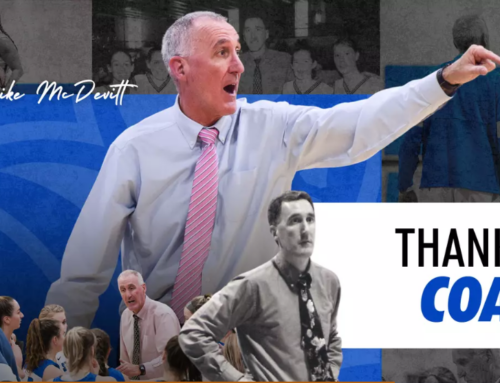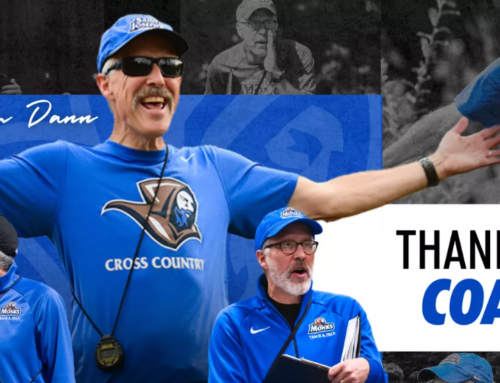At home in the laboratory with Avery Liotta-Henderson ’19
by Patricia Erikson
Although the climate-controlled air in the MacBride Advanced Chemistry Laboratory runs cold, the smiles that welcome visitors are warm. Avery Liotta-Henderson ’19 (Waterbury, CT) puts down three vials of imines and steps away from the hoods for an interview. He and his mentor, Dr. Yi Jin Gorske, wear white lab coats, safety glasses, and gloves.
Avery shares, “My passion for science started with an interest in space science because my step-grandfather was part of the team that designed the Hubble Space Telescope. Then, another grandfather has rheumatoid arthritis. This led to my interest in medicine and genetics. Watching that suffering, I thought, there has to be a cure. The pain of seeing someone you love deteriorate slowly made me want to help. But, there is no cure for arthritis. There is just chemotherapy and a treatment to block pain receptors. So, I read medicinal chemistry literature a lot.
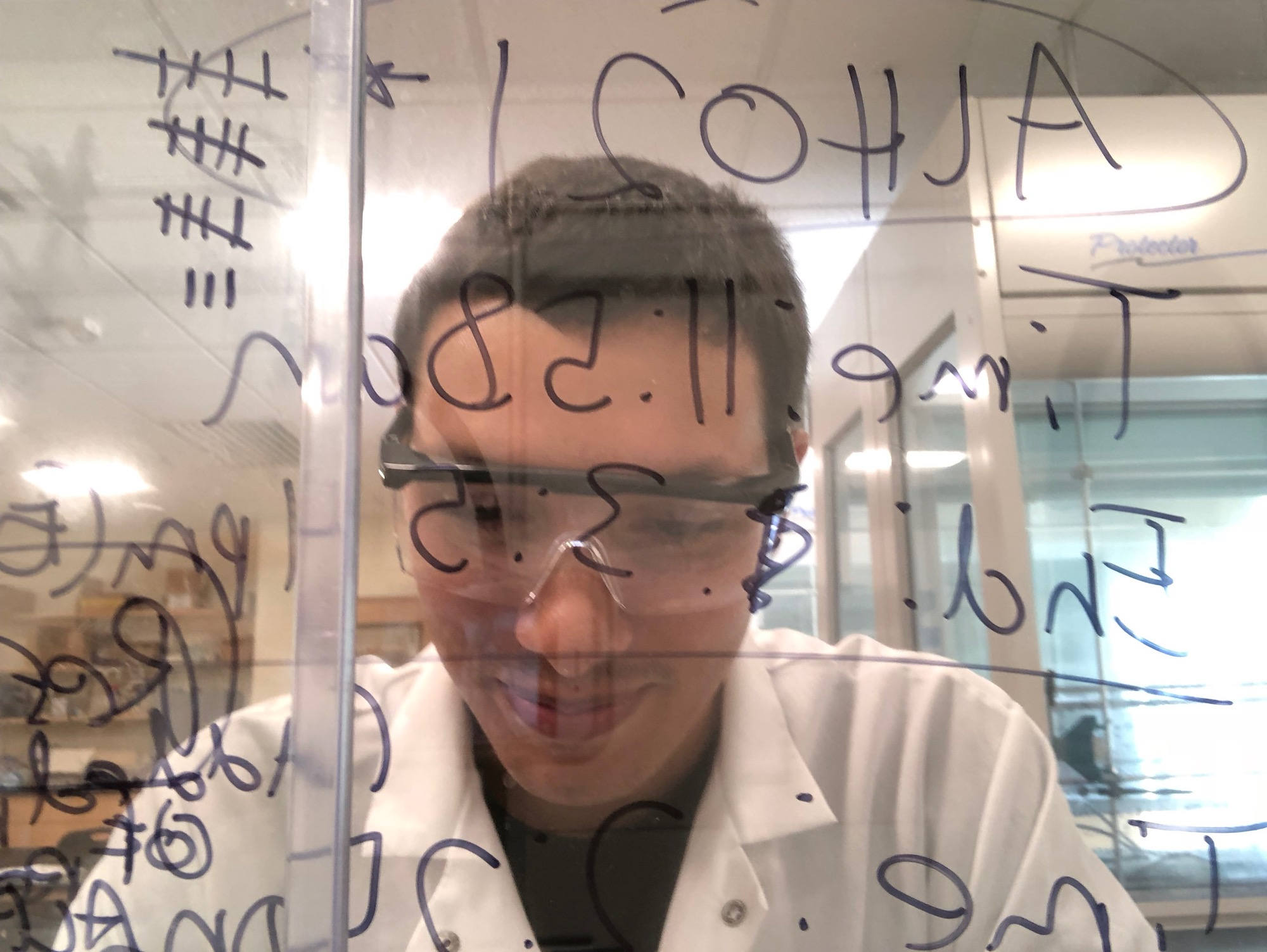
Avery Liotta-Henderson ’19, from inside of one of the fume hoods in Saint Joseph’s MacBride Advanced Chemistry Laboratory.
“Here, at Saint Joseph’s, I am currently enrolled in Biology Seminar and Research, and for my senior project I thought, I’m interested in antibiotics and making drugs. Who can I work with? Dr. Yi Jin Gorske was my professor for Organic Chemistry and Medicinal Chemistry and so I asked her about her summer plans and if she was interested in having me work with her.”
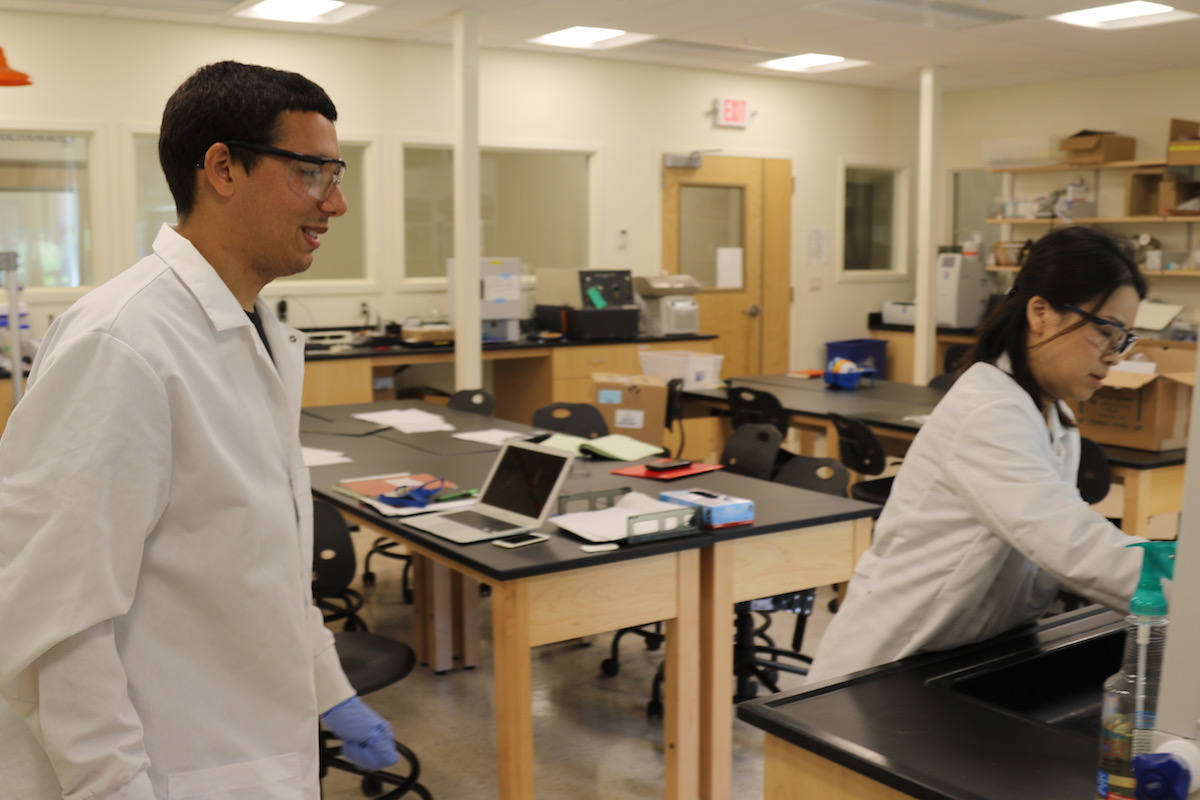
Using Connections Program funding, Avery Liotta-Henderson ’19 spent the summer working for Dr. Yi Jin Gorske in the MacBride Advanced Chemistry Laboratory.
Avery posed the right question to the right professor. A synthetic organic chemist by training, Dr. Gorske worked for three years as a medicinal chemist at PTC Therapeutics in New Jersey in drug discovery after receiving her PhD from the University of Madison-Wisconsin.
Dr. Gorske recalls Avery approaching her. “I told him how my research is about a synthetic method toward incorporating medium-sized rings into molecules. These medium-sized rings are hard to make efficiently and so it is rarely used in synthesizing drugs. We are using a structure known as the beta-lactam as a template from which we plan to build these medium-sized rings. Beta-lactams are primarily found in many commonly prescribed antibiotics, such as the penicillins.”
Avery remembers. “At first, in the laboratory, I was very nervous and I thought, I can’t do this. I didn’t want to mess things up which, of course, makes you mess things up. I feel comfortable now. The laboratory is another home. The lab is homey for me. I know that I can do this, no problem.”
Avery quickly sketches these “rings” and explains why different elements on it are important: “Adding other atoms around the beta-lactam can play an important role in what it does biologically. For example, the position of a sulfur atom around the beta-lactam can play an important role. When sulfur is on one side of the ring, it acts as an antibiotic; whereas, when the sulfur is relocated to another part of the beta-lactam, the ring may lose that activity or gain other biological functions.”
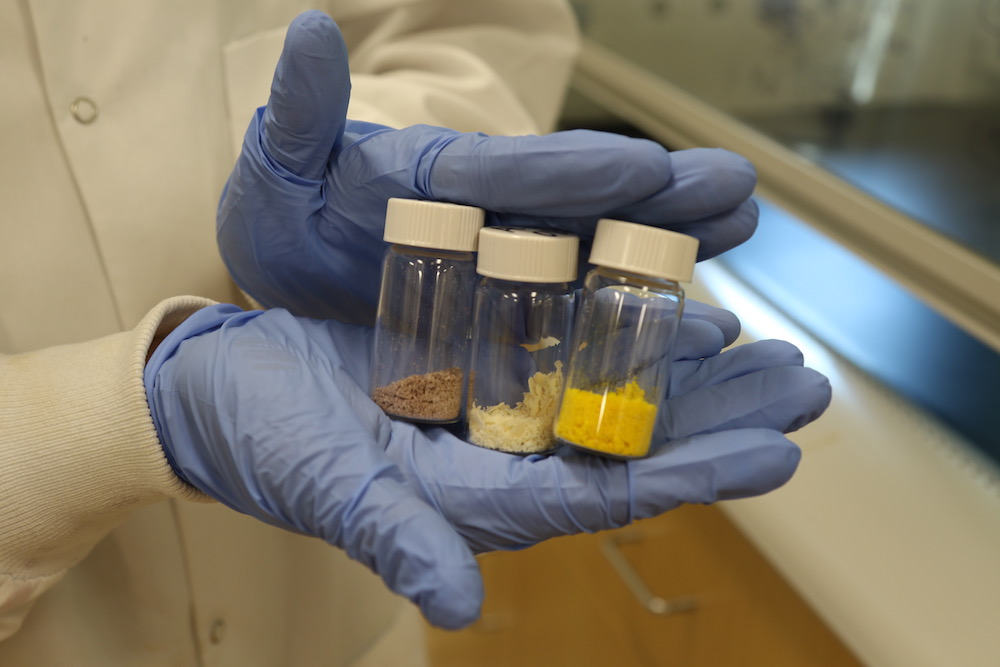
Avery Liotta-Henderson holds three vials of imines, powdery crystals used in the research process.
Dr. Gorske nods. “Avery is passionate about the world of drug discovery. This is a good starting place for him to gain experience doing fundamental research. It’s important to gain these hands-on skills in learning how to synthesize, isolate, and purify compounds. He routinely sets up reactions, including those that are sensitive to moisture and air, so by gaining experience with these sensitive techniques, he will be well prepared for graduate school. This type of research opportunity is an extremely valuable experience for our science students, and particularly important to those students who want to pursue scientific research in the future. It’s great that this type of support is available to all students.”
Avery adjusts his safety glasses. “I’m spending all of my time in the laboratory. I’m trying to decide between research and getting a job. The Connections Program has been tremendous for me. All of this wouldn’t have happened otherwise.”


